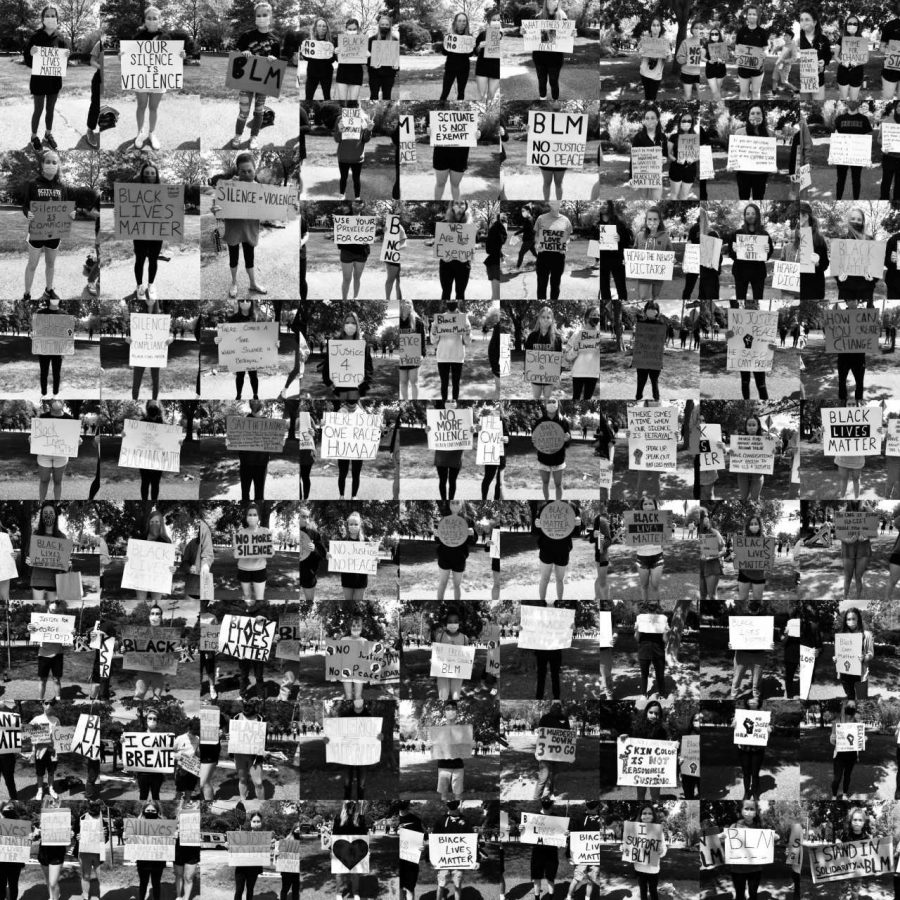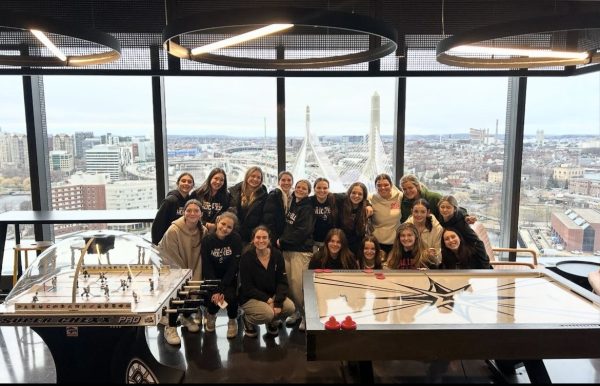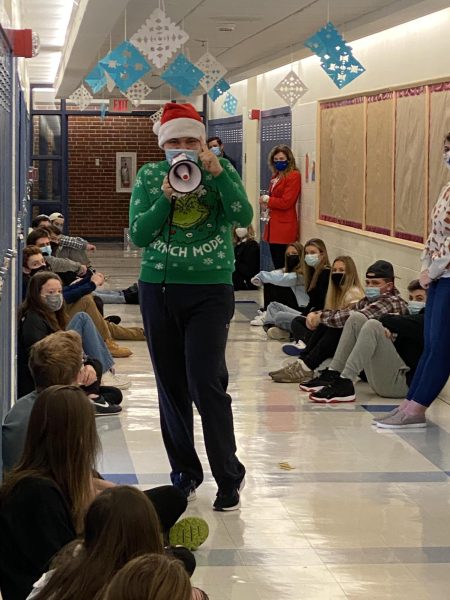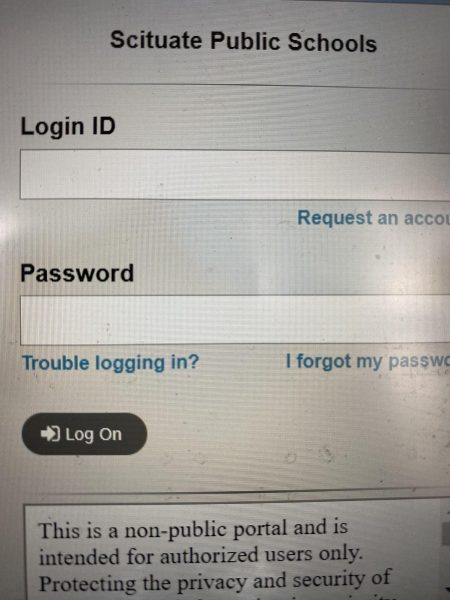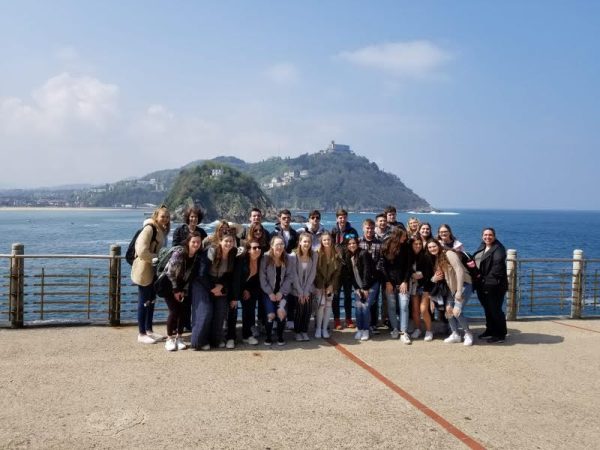Small Black Squares–Protest is Trending
Examining why movements trend, and why this one should keep trending
Collage of students who attended protests in Scituate
November 2, 2020
On Tuesday, June 2nd, 2020, Scituate high schoolers were logging on to some of their last Zoom classes, beach days were being planned, and sweaters were finally being shoved in a closet until the fall. However, as teenagers scrolled through Instagram, a new task was added to their summer bucket list: become an activist. On this day, #BlackOutTuesday was introduced by two black female record industry executives, Jamila Thomas and Brianna Agyemang, to combat racism in the world of music production. Originally under the hashtag #TheShowMustBePaused, the trend surged, with musicians such as Billie Eilish and Rihanna displaying the message on their social media to enforce a pause in everyday life and shine a spotlight on systemic racism after the May 25th murder of George Floyd at the hands of Derek Chauvin and the Minneapolis Police Department.
All over the nation, as a pandemic pressed on, Scituate residents found this growing movement at an opportune time, when a job or an education was not taking up the brunt of their labor. Out of inspiration, free time, or the intangible feeling of restlessness caused by months of isolation, there sprung something rare and powerful: people in Scituate took a stand. “Human attention is always going to attract what’s most popular at the time, so when the BLM movement started picking up, everyone was obviously attracted to it,” says SHS junior Ira Zhusti. On that Tuesday, tiny black squares flooded the feeds of adolescents and adults alike, the clumped words of #BlackOutTuesday read by thousands of Scituate eyes. Later that day, the Scituate Town Common was surrounded with over 200 concerned, masked citizens demanding change. Among students, there was an undercurrent of ideas, inspiring new thoughts of ways to tackle the issue at a local level.
“We were all in front of the news all day anyway, and this thrust out into the open,” said SHS history teacher Kristen Emerson, considering possible reasons behind the sudden and overwhelming support among Scituate residents. The wave of changemakers, she claims, was incredibly important in taking steps toward achieving justice: “Anytime that there’s going to be some sort of positive change, it can be a good thing.” Emerson has been a supporter of the statement Black Lives Matter since attending Gettysburg College in Gettysburg, Pennsylvania. Emerson graduated in 2014. The phrase was first created in 2013 after the death of Trayvon Martin. Addressing the students directly, Emerson wants each and every concerned teenager to know, “You should fight for the things you care about, but you shouldn’t have to do it by yourself.”
However, fighting for the things one cares about can become tiring. For many, as the weather got warmer and the restrictions loosened, a day at the beach sounded more appealing than a stuffy trip to the Common for two hours. Numbers at demonstrations dwindled, and posts from June 2nd were slowly and carefully deleted from accounts, so as to make room for 3rd of July pictures and highlights from trips to Boston. Was the movement still alive? Or was it reduced to a mere trend of activism? Did life simply proceed without a solution to the unanswered questions? According to SHS senior Will Keleher, there is still a lot of behind-the-scenes work being done that isn’t always out in the open–that people might not be able to see simply driving by a demonstration or scrolling through Instagram. He explains that alternate forms of activism, such as signing petitions and educating oneself, can sometimes be just as effective as public standouts.
Furthermore, recent events at Scituate High School have drawn a new passion out of the woodwork among students, faculty, and administration alike. With consideration of curriculum changes to promote DEI (Diversity, Equity, and Inclusion), new statements about anti-racist policies in the school system, and countless opportunities to get involved in local initiatives, it seems as if the outrage and devotion that shone through on June 2nd have gathered again in the form of proactive activism. Ira Zhusti and Sarah Weinberg, juniors and leaders of the new Anti-Racism Club at the high school, want to keep the momentum going, and are working together with students to push for change. “We want this to be a safe place for all BIPOC students,” Weinberg says. “We are trying to constantly remind people that racism is always going to be here.”
“Movements tend to ebb and flow,” Emerson sighs, and she is right. Ever since the creation of the slogan, energy for the Black Lives Matter fight has come and gone, and many get distracted along the way. Thus, it is during these crucial moments, when we have the attention of the public and everyone is watching, when activism becomes a trend, that the moment must be seized. If this is our singular chance to make a difference in a town with a short attention span, we must use it while we can–make the moments last. Sign petitions. Attend marches. Make posters. Fight for what you believe in. The floor is ours; Carpe Diem.
